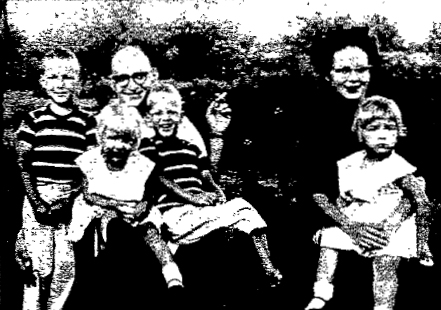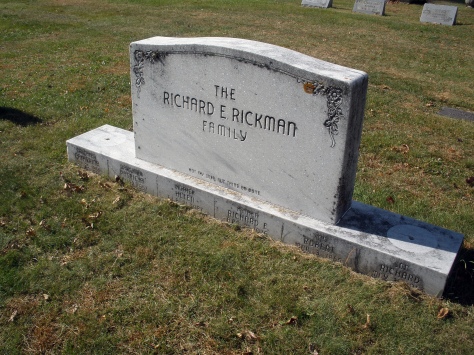For most of his adult life, Carl F. Hanneman said he studied pharmacy at Marquette University in Milwaukee, securing the academic knowledge required to pass the state of Wisconsin pharmacy board exam. Even his obituary in the May 30, 1982 issue of the Wisconsin State Journal stated, “He was a graduate pharmacist of Marquette University.”
Now, more than 90 years after Hanneman’s days of youth in Milwaukee, a question has been raised about where he studied to prepare for his nearly 60-year career as a pharmacist. As The Hanneman Archive was preparing to donate Carl’s student notebooks, study guides and formulary books from his days at Marquette, staff at the university’s archives said they could not find him in an initial search of the graduate database.

The College of Pharmacy at Marquette was disbanded in 1918, as World War I decimated the ranks of students and faculty alike. The plan was to re-establish the pharmacy program after the war, but those plans were never realized and Marquette never again had a pharmacy degree program. So what to make of Carl’s story and his history? We can assume he did not fabricate it, since he was licensed in Wisconsin for 57 years. So, what to do when presented with a mystery? We dug into it.
Some facts in our favorite pharmacist’s story are well-established. Carl Henry Frank Hanneman was born on October 28, 1901 in Grand Rapids, Wood County, Wisconsin (the city’s name was changed to Wisconsin Rapids in 1920). He was the youngest of five children of Charles and Rosine (Osterman) Hanneman. (We related elsewhere on this site some of the confusion surrounding his birth when he sought a copy of his original birth certificate in 1946).

His father Charles, whose full name is Carl Frederick Christian Hanneman, emigrated to Wisconsin in November 1882 from county Regenwalde in the Baltic Duchy of Pomerania (now in Poland and Germany). His mother was native to Wood County, Wisconsin. The senior Hanneman toiled at manual labor. He started as a saw mill worker and later became a farm hand for his brother William at the dawn of the 20th century. Charles worked on the 1908 construction of the sewer system in Grand Rapids, earning 17.5 cents per hour. He later worked in a paper mill. Young Carl had a good role model for hard work.
Carl attended public schools, graduating from Lincoln High School in 1921. He was a smart young man, with equal talents at science and art. Shortly after high school, he began work as an apprentice at the well-known Sam Church drug store. A spark was lit. Carl felt a calling. Carl’s apprenticeship at the Church drug store lasted nearly five years. We believe the person who told Carl about Marquette University was Mark C. Whitrock, a 1913 Marquette pharmacy graduate and pharmacist at Sam Church. Nearly 10 years Carl’s senior, Whitrock was also a member of the Wisconsin Rapids city council.

Among Carl’s Marquette papers is a pharmacy course notebook originally belonging to Whitrock. It is from a theoretical pharmacy course taught by Dr. Hugh C. Russell, a physician and professor in Marquette’s College of Pharmacy. Whitrock gave the book to Carl to help him prepare to study for work as a druggist. What to do, since the pharmacy degree program at Marquette was no more? With some help from the Marquette University Archives and Carl’s own writings, we found the answer.

In 1923, Marquette began offering a “short course” in pharmacy under the auspices of the College of Dentistry. The school newspaper, the Marquette Tribune, said the course was “not part of the regular curriculum of the university.” What? The courses in chemistry, organic chemistry, pharmacy, pharmacognosy, toxicology and drug identification were rigorous. They were taught by the aforementioned Dr. Russell and Professor Frederick C. Mayer, both former deans of the Marquette College of Pharmacy. The two-semester program was designed for young men and women with pharmacy experience, in preparation to pass the state exams.

Carl enrolled in the pharmacy short course in the winter of 1924. We know he paid tuition (he referenced in later writings having to save before enrolling at Marquette). He lived in the 700 block of 37th Street in Milwaukee, just west of the Marquette campus. We have a number of photos of his fiancee, Ruby Treutel, visiting him at Solomon Juneau Park in Milwaukee in 1924.
The books Carl left behind contain hundreds of pages of meticulous notes on chemistry, pharmacy and related subjects. Two of the books have Marquette pennant stickers on the front. Carl’s pocket-size copy of the Guide to the Organic Drugs of the United States Pharmacopœia has a Marquette University seal on the cover. His exam book shows he scored an 82 percent on one test in 1924. The test was corrected by someone identified only as “A. Mankowski.” So far, we have not identified that person further.

It seems odd that Marquette would offer such a program but not count it as official curriculum. The university offered certification programs in other subjects. We have no paper certificate or other document showing Carl matriculated from the pharmacy short course, but we will ask Marquette to check its records thoroughly. Otherwise, Carl and many others like him from the 1920s would be Marquette orphans, educated by the university but not claimed as students or course graduates.
Carl traveled to Madison on January 24, 1925 for the state Board of Pharmacy examination. He was one of 105 applicants seeking licensure as either a registered pharmacist or assistant registered pharmacist. Carl was among 76 people who passed the exam that day. On January 30, the Wisconsin State Board of Pharmacy issued him certificate No. 3252 as a registered assistant pharmacist. With his credentials in hand, he returned home to Wisconsin Rapids. Mark Whitrock hired him as a druggist for the brand new Whitrock & Wolt pharmacy on Grand Avenue.

Six months later in nearby Vesper, Carl married his longtime sweetheart, Ruby Viola Treutel. After working at the Whitrock pharmacy much of 1925, Carl and Ruby moved to Janesville. Carl took a druggist job with the McCue & Buss Drug Co. in downtown Janesville. After about six months, Carl and his now-pregnant wife moved to Fond du Lac, where Carl started work for Fred Staeben at the Staeben Drug Co. Just weeks later, they welcomed their first child, Donn Gene Hanneman.
By Christmas 1927, the Hannemans moved back to Wisconsin Rapids. Carl became a druggist for his old employer, Sam Church. He stayed in that job for five years. In March 1933, the family welcomed another son, David Dion. Carl then left the pharmacy world for a sales job with the Consolidated Water Power & Paper Co. That assignment lasted for several years.

Pharmacy was his calling, so Carl looked for a chance to retake his place behind the druggist’s counter. In February 1936, Carl was hired by Dr. J. Samuel Hess Jr. to be an assistant pharmacist at the Mauston Drug Store, which was attached to the Hess Memorial Hospital in Mauston.
We wrote elsewhere on this site of Carl’s heartfelt September 1937 plea for assistance obtaining a full registered pharmacist license. He wrote to Orland S. Loomis, a well-known Mauston attorney and former state senator who was then Wisconsin’s attorney general. Carl regretted not taking the full registered pharmacist exam in 1925. At the time, he was six months short of the five years of apprentice experience required to become a registered pharmacist. Now 12 years later, lacking that higher license, he could not officially manage the Mauston Drug Store because of a quirk in state law regarding small-town pharmacies. The better license would mean better salary, something that became crucial in August 1937 with the birth of the Hannemans’ third child, daughter Lavonne Marie.
We don’t know if Loomis wrote back or helped Carl with his license issues. (Loomis became governor-elect of Wisconsin in 1942, but died before taking office. As a correspondent for the Wisconsin State Journal, Carl photographed Loomis at the Loomis home in Mauston on election eve in November 1942). Carl became a full registered pharmacist on July 12, 1944. He was among nine people issued new licenses that Wednesday in Madison. He was issued certificate No. 5598 by the Wisconsin State Board of Pharmacy. The certificate was signed by Oscar Rennebohm, a well-known Madison pharmacist who later became Wisconsin’s 32nd governor.

So the mystery is solved. Carl Hanneman did enroll in and complete a short course in pharmacy at Marquette University in 1924. It remains to be seen if Marquette will claim him and his many colleagues who studied in the pharmacy short course in the 1920s. His class notes, study guides and other materials from that time will be donated to the Marquette University Archives later this summer.
©2016 The Hanneman Archive






























































